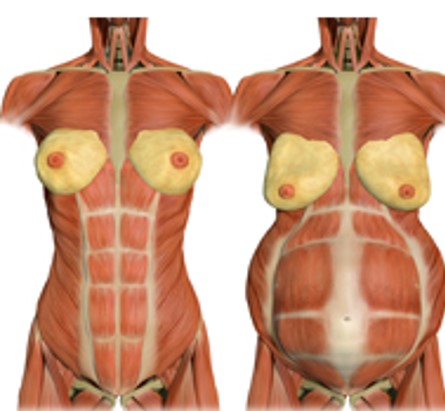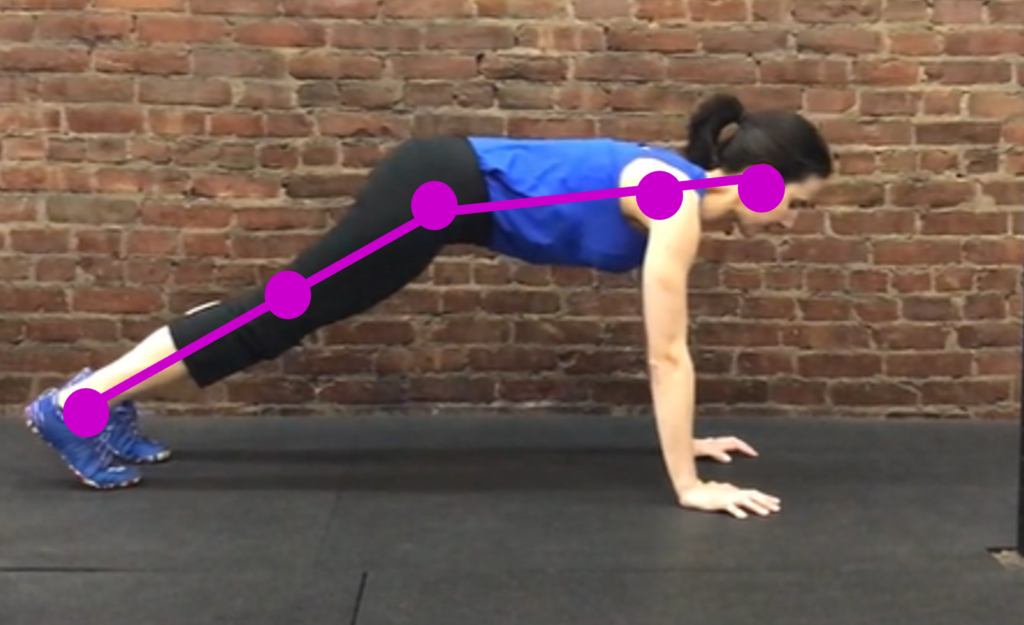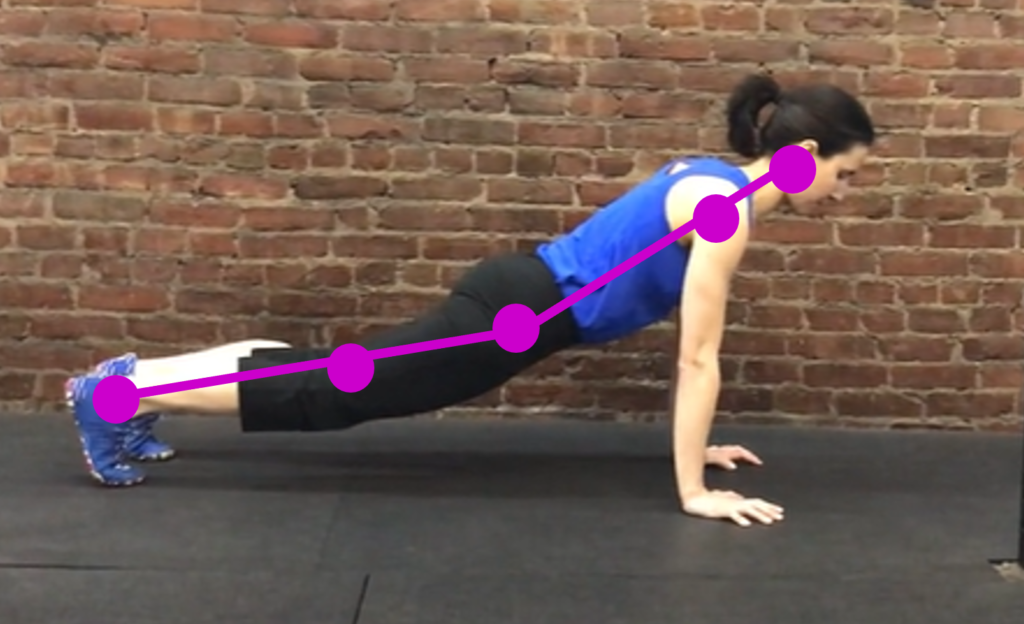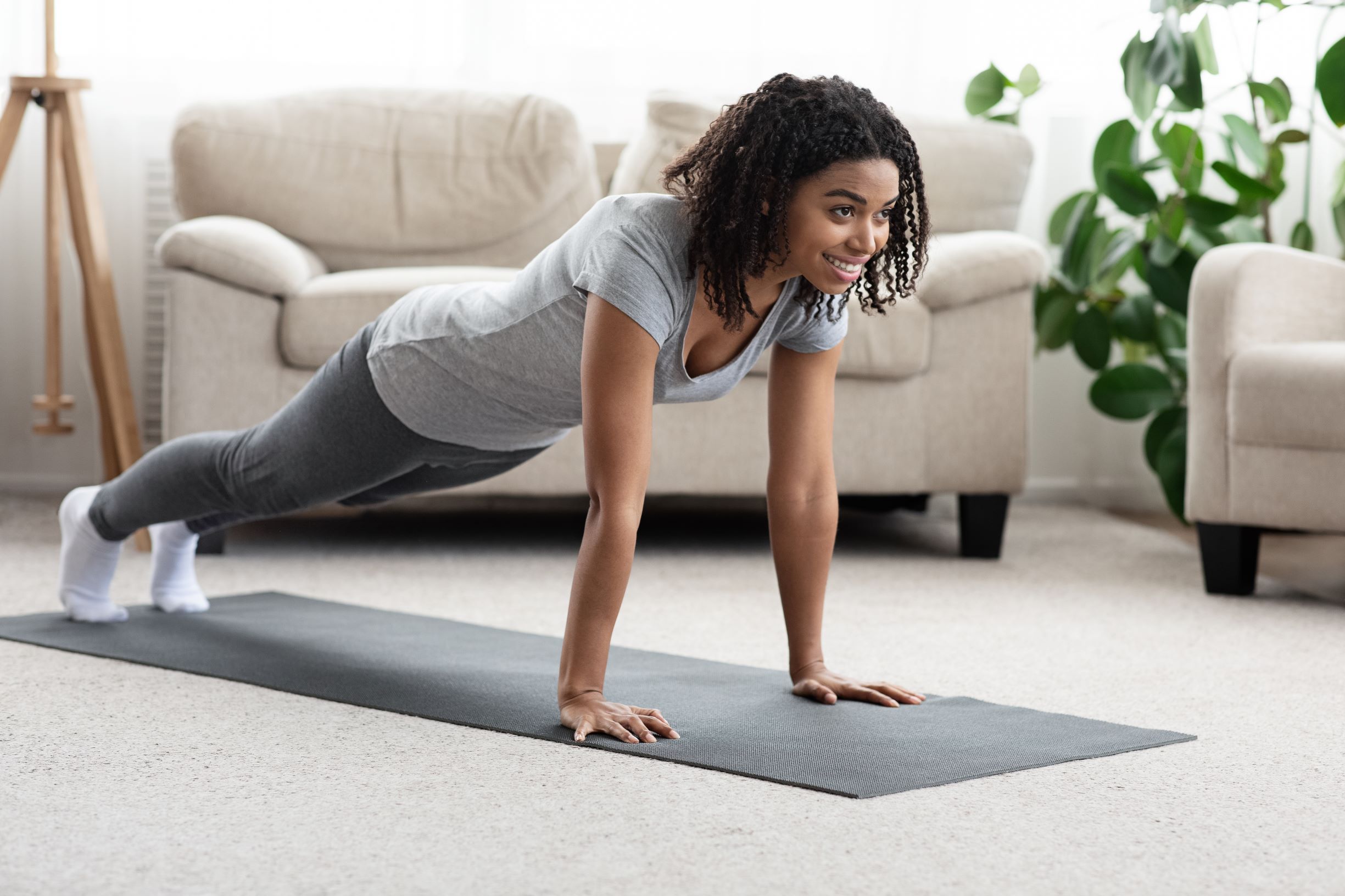You may be in the initial postpartum stages, or even years into parenthood, and wondering about rebuilding your core strength. And since planks are such a great core exercise, it stands to reason that you’d want to get back to planking. But when is it appropriate, and safe, to incorporate planks? And how do you resume them most effectively?
These are great questions. Therefore, in this article, we will cover:
- When to resume planks: prerequisites before resuming
- How to resume planks: 5 progressions to work your way up to full planks
- Signs to regress: Two key signs that indicate a movement is too much for your core muscles
When to Resume Planks: Prerequisites
Growing and birthing a child dramatically changes the core musculature. Specifically, the core had to expand in all dimensions in order to adapt to the progressively larger child growing inside of it, like you see below. That expansion changed the way core tissues function, altering their length and the amount of tension they can produce.

Therefore, before resuming planks, it is essential to first rebuild the core tissues from the inside out through specific core recovery work. You can do this work with a physical therapist, a certified personal trainer who specializes in pre & postnatal, or a core recovery program. For some tips to get you started on your recovery, check out this post on postpartum core recovery.
Progression to Planks
Once you have worked through the essential core recovery work, it’s time to put demands on your core that more closely mimic those posed by planks. Do these next moves in numerical order, as they get progressively more challenging. It is important to incorporate your 360° Breathing (first exercise listed in the postpartum core recovery exercises) – focusing on a light inhale through the nose, and a strong exhale through mouth.
1. Quadruped Hovers
2. Quadruped hovers with Leg Reach
3. Quadruped Walkout
4. Plank Hovers
5. Plank hold
Signs to Regress
As you progress through these (and other) movements, keep an eye out for signs that a move may be a bit too stressful for your core. There are two key signs to look for:
1. Coning in the Belly
If you see coning during a plank, or any movement (as pictured below), this is a sign of Diastasis Recti. Coning is an indicator that the movement you are doing exceeds the capacity of your core muscles at this time. It is no need to panic. Just stop the movement and regress. Perhaps you do not see any coning at first, but then see it after several seconds of holding a plank, or several repetitions of a movement. This just means your core muscles fatigued, and you should decrease the reps (or time held), and then gradually work your way back up.

2. Loss of Neutral Alignment
When performing a full plank, there should be a straight line between your ear-shoulder-hip-knee-ankle, as pictured below. This is known as neutral alignment.

Sometimes, we create compensations (little “cheats”) in order to finish an exercise. As the core muscles begin to fatigue when holding a plank, it’s common to see the hips hike upward or sink downward, as in the images below. Remember that movement quality is your primary objective. So, if you find yourself doing these compensations, simply stop and rest.


Want Additional Resources?
For additional resources to help you recover, build strength, and get back to doing what you love, explore our Postpartum Training Programs. Or, for a more personalized approach, visit our Find a Coach page to find an expert trainer who can design and coach you through a customized training program.
Are you a Health & Fitness Professional?
If you are a health & fitness professional interested in coaching pre & postnatal clients, explore our ProNatal Education & Certification.
